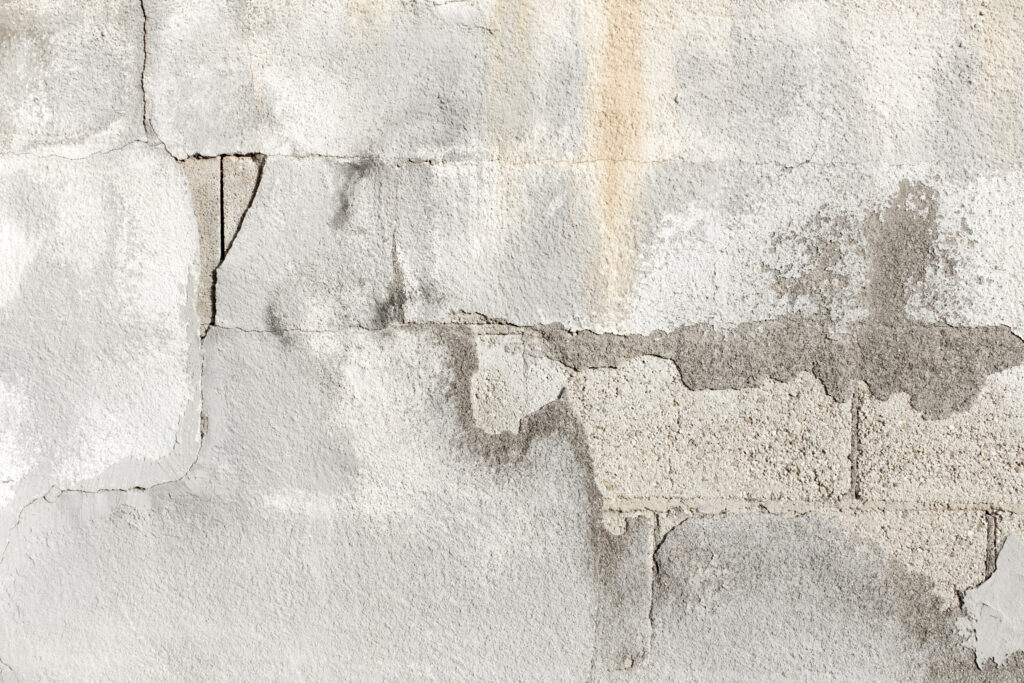
Cracks in walls can be unnerving for any homeowner. They not only affect the visual appeal of your home but also raise concerns about potential structural issues. Understanding the causes behind these cracks, the types they come in, and the appropriate solutions can help homeowners address
the problem effectively and prevent further damage.
Causes of Cracks in Walls
Cracks in walls can be caused by various factors, both natural and human made:
1. Settlement: One of the most common reasons for cracks in walls is the natural settling of the
house over time. As the soil underneath shifts or compacts, it can cause the foundation to settle
unevenly, leading to cracks in the walls.
2. Excess Moisture: Water is a significant contributor to wall cracks. It can infiltrate through leaks in
the roof, plumbing issues, or poor drainage around the foundation, causing the soil to expand and
contract, which stresses the walls.
3. Temperature Fluctuations: Extreme temperature changes can cause materials to expand and
contract, putting stress on the walls and potentially leading to cracks.
4. Poor Construction: Inadequate structural design or the use of low quality materials during
construction can also contribute to wall cracks, especially in loadbearing walls.
Types of Cracks
Not all cracks in walls are the same. They can vary in size, shape, and severity, each indicating
different underlying issues:
1. Hairline Cracks: These are thin cracks that are usually less than 1/16 inch wide. They are common
in new homes and are often caused by minor settlement or normal shrinkage of materials.
2. Vertical Cracks: Vertical cracks typically run straight up and down and are often caused by
settlement or drying shrinkage.
3. Diagonal Cracks: These cracks usually run at a 45 degree angle and can indicate more serious
structural issues, such as foundation movement or soil pressure.
4. Horizontal Cracks: Horizontal cracks are less common but can be more serious. They often indicate
excessive soil pressure against the foundation or even foundation settlement.
Signs That Require Immediate Attention
While some cracks may be minor and not cause for immediate concern, others may indicate serious
structural problems that require prompt attention:
- Widening Cracks: If you notice cracks widening over time, it could be a sign of ongoing structural
movement. - Cracks Around Doors and Windows: Cracks that appear around door frames and window openings
can indicate foundation settlement or structural movement. - Sticking Doors and Windows: Difficulty in opening or closing doors and windows can be a sign of a
shifting foundation.
Addressing Cracks in Walls: Solutions and Prevention
Addressing cracks in walls depends on their cause and severity. Here are some steps homeowners
can take:
1. Identify the Cause: Before fixing the cracks, it’s essential to determine the underlying cause. This
may require a professional inspection by a structural engineer to assess the extent of the damage.
2. Repair Cracks: Small, hairline cracks can often be repaired using flexible sealants or patching
compounds designed for masonry and plasterboard. More significant cracks may require
professional repair involving techniques such as epoxy injection or wall anchors.
3. Address Moisture Issues: Fixing leaks in the roof, repairing plumbing leaks, and improving
drainage around the foundation can help prevent future cracking due to moisture infiltration.
4. Monitor Regularly: Regularly inspecting your walls for new cracks or changes in existing cracks can
help catch problems early and prevent costly repairs.
Conclusion
Cracks in walls are a common issue faced by homeowners, but they should not be ignored. Understanding the causes, types, and signs of cracks can help homeowners take appropriate action to address the problem before it worsens. Whether through DIY repairs or professional assistance, timely intervention can preserve the structural integrity of your home and ensure peace of mind for years to come. Remember, when it comes to cracks in walls, prevention and early detection are key to maintaining a safe and secure living environment.
